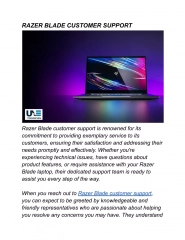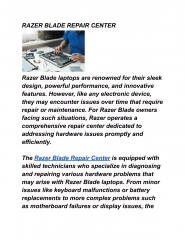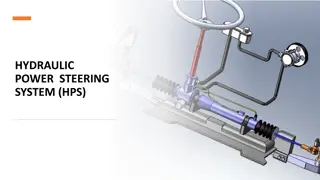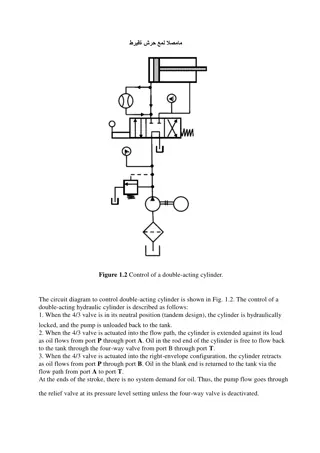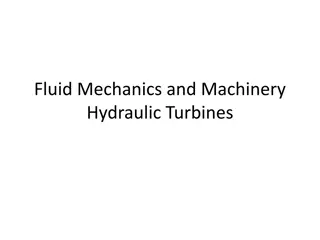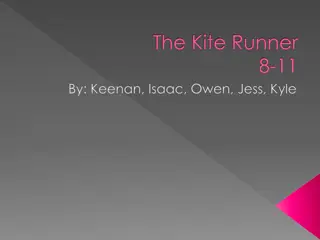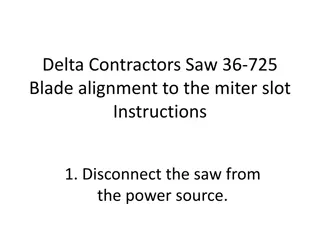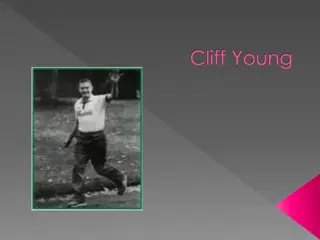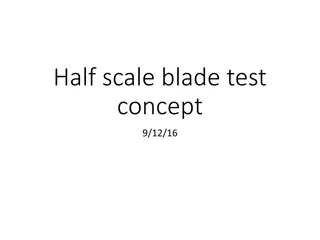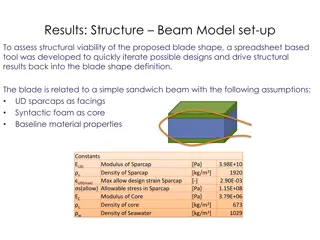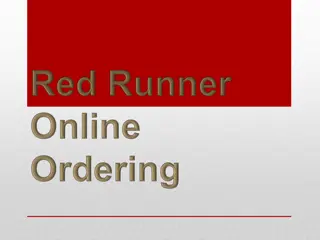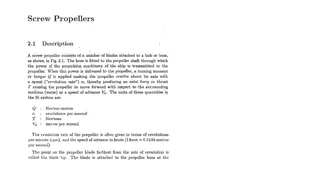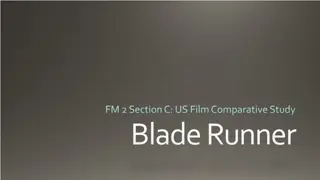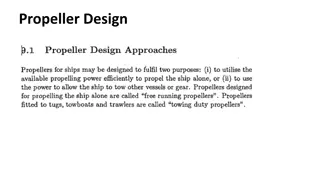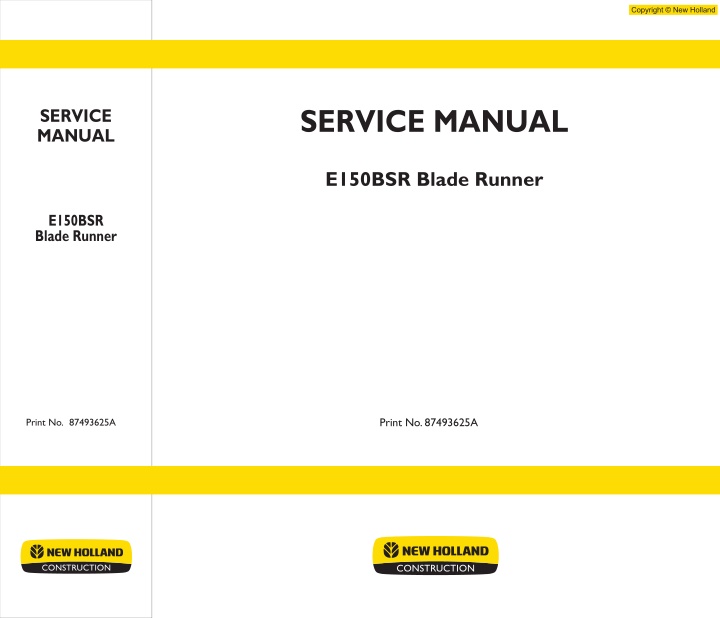
New Holland E150BSR Blade Runner Hydraulic Excavator Service Repair Manual Instant Download
New Holland E150BSR Blade Runner Hydraulic Excavator Service Repair Manual Instant Download
Download Presentation

Please find below an Image/Link to download the presentation.
The content on the website is provided AS IS for your information and personal use only. It may not be sold, licensed, or shared on other websites without obtaining consent from the author. If you encounter any issues during the download, it is possible that the publisher has removed the file from their server.
You are allowed to download the files provided on this website for personal or commercial use, subject to the condition that they are used lawfully. All files are the property of their respective owners.
The content on the website is provided AS IS for your information and personal use only. It may not be sold, licensed, or shared on other websites without obtaining consent from the author.
E N D
Presentation Transcript
SERVICE MANUAL SERVICE MANUAL E150BSR Blade Runner E150BSR Blade Runner Print No. 87493625A Print No. 87493625A
CONSTRUCTION E150BSR Blade Runner SERVICE MANUAL ENGLISH Print No. 87493625A Issued 09/2008 English - Printed in Italy Printed by Studio ti - 35008
https://www.ebooklibonline.com Hello dear friend! Thank you very much for reading. Enter the link into your browser. The full manual is available for immediate download. https://www.ebooklibonline.com
SAFETY INSTRUCTIONS GENERAL SAFETY INFORMATION Safety messages appear in this manual and on the machine. All safety messages are identified by the words DANGER , WARNING and CAUTION . S?DANGER S?WARNING Do not perform any maintenance operation on this machine until you have carefully read and under- stood all instructions contained in this manual. Indicates an imminently hazardous situation which, if not prevented, will result in death or se- rious injury. S?WARNING An improper operation or maintenance of this ma- chine may lead to accidents or serious injury, even death. If parts are missing or damaged, contact your Deal- er to have them replaced. Indicates a potentially hazardous situation which, if not prevented, will result in death or se- rious injury. S?CAUTION If you have any questions, please consult your Deal- er. Most accidents occurring during operation are due to negligence of precautionary measures and safety instructions. Sufficient care should be taken to pre- vent these accidents. Incorrect operation, lubrica- tion or maintenance are very dangerous and may cause injury or death of the personnel. Therefore all precautionary measures, NOTES, DANGERS, WARNINGS and CAUTIONS contained in this man- ual and on the machine should be read and under- stood by all personnel before starting any work with or on the machine. Indicates a potentially hazardous situation that, if not prevented, will result in minor or moderate injury. It may also be used to alert against possi- ble damage to the machine and its components. It is very difficult to forecast every danger that may occur during operation. However, safety can be guaranteed by fully understanding the operating procedures for this machine according to the meth- ods recommended by the Manufacturer. While operating the machine, be sure to perform work with great care, so as not to damage the ma- chine, or allow accidents to occur. Operation, inspection and maintenance should be carefully carried out, and safety must be given the first priority. Safety messages are indicated with marks. The safety information contained in this manual is intended only as an integration of safety codes, insurance requirements, local laws, rules and regulations. Continue studying this manual until all safety, oper- ating and maintenance procedures are completely understood by all persons working with the ma- chine. 0-3
SAFETY INSTRUCTIONS SAFETY INSTRUCTIONS S?WARNING Lubrication and maintenance appropriate for this machine, recommended by the Manufacturer, are indicated in this Service Manual. An improper performance of lubrication or mainte- nance procedures is dangerous and could result in injury or death. Read and understand this manual before carrying out any lubrication or maintenance operation. S? WARNING Do not operate this machine until you have read and understood the instructions contained in this manu- al. Improper machine operation is dangerous and could result in injury or death. Relieve all pressure in air, oil or fuel systems before any lines, fittings or related devices are disconnect- ed or removed. Always make sure that all raised components are blocked correctly and pay attention to possible pressures when disconnecting any de- vice from a system under pressure. The operator or serviceman may be unfamiliar with many of the systems in this machine. This makes a careful use of the systems very important when per- forming maintenance operations. Getting familiar with the system or its components is very important before removing or disassembling any of them. Lower the bucket, dozer or other attachments to the ground before performing any operation on the ma- chine. If this cannot be done, make sure the bucket, dozer or other attachment is blocked correctly to prevent it from dropping unexpectedly. Because of the size of some of the machine s com- ponents, the operator or serviceman should check the weights noted in this manual. Use proper lifting procedures when removing any components. Use the steps and the grab handles when mounting or dismounting the machine. Remove any debris or mud from steps, walkways or work platforms before using them. Always face the machine when using steps, ladders and walkways. When it is not possible to use the de- signed access system, provide ladders, scaffolds, or work, platforms to perform safe repair operations. The following is a list of basic precautions that must always be observed. Read and understand all warning labels and safety decals before operating, servicing or repairing this machine. To prevent back injury, use a hoist when lifting com- ponents which weigh 20 kg (45 lbs) or more. Make sure all chains, hooks, slings, etc., are in good con- dition and have the correct capacity. Be sure hooks are positioned correctly. Lifting eyes are not to be side loaded during a lifting operation. Always wear protective glasses and protective shoes when working around machines. In particular, wear safety goggles when using ham- mers, punches or drifts on any part or attachment of the machine. Use gloves, safety goggles, aprons and protective clothing appropriate for welding jobs. Do not wear loose accessories or torn clothes. Re- move all rings from fingers, loose jewellery, confine long hair and loose clothing before working on this machine. In order to prevent burns, be careful not to touch hot machine parts and hot liquids in systems. Be careful when removing cover plates. Gradually back off the last two screws or nuts located at oppo- site ends of the cover or device and carefully pry the cover loose to relieve any spring or other pressure before removing the last two screws or nuts com- pletely. Disconnect the battery and hang a Maintenance in progress tag in the operator s compartment. Re- move the starter switch key. If possible, make all repairs with the machine parked on a level and firm surface. Block the machine so it does not roll while working on or under the machine. Hang a Maintenance in progress tag in the opera- tor s compartment. Be careful when removing filler caps, breathers and plugs on the machine. Hold a rag over the cap or plug to prevent being sprayed or splashed by liquids under pressure. Danger is even greater if the ma- chine has just been stopped, as liquids might be boiling hot. Do not work on any machine that is supported only by lift, jacks or a hoist. Always use blocks or stops for the jack before carrying out any disassembly op- eration. 0-4
SAFETY INSTRUCTIONS Do not operate a machine if any rotating part is dam- aged or contacts any other part during operation. Any high speed rotating component that has been damaged or altered should be checked for balance before reusing. Always use proper tools that are in good condition and that are suited for the job at hand. Be sure you understand how to use them before performing any service work. Replace all clamps with original spare parts. Do not use clamps of a lesser quality. Be careful when servicing or separating the crawl- ers. Chips can fly when removing or installing a crawler pin. Wear safety glasses and long sleeve protective clothing. Crawlers can unroll very quickly when separated. Keep away from front and rear of machine. The machine can move unexpectedly when both crawlers are disengaged from the sprockets. Block the machine to prevent it from moving. Repairs which require welding should be performed only with the benefit of the appropriate reference in- formation and by personnel adequately trained and skilled in welding procedures. Determine the type of metal being welded and select the correct welding procedure and electrodes, rods or wires to provide a metal weld strength at least equivalent to that of the parent metal. Make sure to disconnect the bat- tery before any welding operation is performed. Do not damage the cables during removal opera- tions. Reinstall the cables so that they are not dam- aged during machine operation, by contacting the machine s sharp corners or by rubbing against ob- jects or hot surfaces. Do not connect the cables to a system containing liquids. Make sure all protective devices including the oper- ator s protective devices are properly installed and functioning correctly before starting a repair opera- tion. If a guard or shield must be removed to perform the repair work, use extra caution and replace the guard or shield after repair is complete. Performing maintenance and repair operations while the bucket is lifted is dangerous, because there is the possibility of a device falling. Do not fail to lower such device and place the bucket to the ground before starting the operation. Loose or dirty fuel, lubrication and hydraulic sys- tems, pipes and hoses may cause fires. Do not bend or strike high-pressure lines, nor install bent or dam- aged lines. Inspect lines, tubes and hoses carefully. Do not check for leaks with your hands. Very small leaks from holes can result in a high-velocity oil jets that will be invisible close to the hose. This oil can penetrate the skin and cause personal injury. Use cardboard or paper to locate hole leaks. Tighten the connections to the prescribed torques. Make sure that all protections against burns, the clamps and the operator s protective devices are correctly installed in order to prevent excessive heat, vibrations or rubbing against other parts dur- ing operation. The protections against oil leaks from hot hoses or damaged seals must be correctly in- stalled. 0-5
SAFETY INSTRUCTIONS TABLE OF CONTENTS 1 - DESCRIPTION 2 - TECHNICAL SPECIFICATIONS 3 - WORKING ATTACHMENT 11 - TOOLS 12 - TABLE OF STANDARD MAINTENANCE TIMES 13 - MAINTENANCE STANDARDS AND INSPECTION PROCEDURES 21 - MECHATRO CONTROL SYSTEM 22 - HYDRAULIC SYSTEM 23 - ELECTRICAL SYSTEM 24 - MAIN COMPONENTS 25 - AIR CONDITIONER SYSTEM 32 - WORKING ATTACHMENT REMOVAL AND INSTALLATION 33 - UPPER STRUCTURE 34 - TRAVEL SYSTEM 46 - TROUBLESHOOTING - BY ERROR CODES 47 - TROUBLESHOOTING - BY TROUBLE 48 - TROUBLESHOOTING - TROUBLE DIAGNOSIS MODE 51 - ENGINE 0-7
SAFETY INSTRUCTIONS NOTE: This Manual is prepared as a technical material in which the information necessary for the mainte- nance and repairing services of our hydraulic exca- vators are collected, and is categorized into 7 Chapters, Specification, Maintenance, System, Dis- assembly, Troubleshooting, Engine, and Installation Procedures for Optional Attachment. This Manual may be properly revised due to the im- provement of products, modification of specifica- tions, etc. And there are cases where the system on actual machine and a part of the contents of this manual may differ due to the variations of specifica- tion by countries. For the section in which the de- scription is hardly understood, contact our distributor. Z The Chapter Specification describes the spec- ifications for entire machine and material, which are instructive for replacement and repairing of attachments. Z The Chapter Maintenance describes the mate- rial, which is helpful for maintenance service and adjustments for entire machine. Z The Chapter System describes the operating system like hydraulic system, electric system, components, and so on. Z The Chapter Disassembly describes the re- moval and installing of assembly mounted on the upper structure and undercarriage, and the assembling and disassembling of the associat- ed hydraulic equipment. Z The Chapter Troubleshooting describes how to find the fault equipment. Z The Chapter Engine describes the engines making use of the Maintenance Manual pro- vided by the suppliers. Z The Chapter Installation Procedures for Op- tional Attachment describes the supplements added on request as required. All parts mentioned in this Manual can be supplied as spare parts, refer to spare part catalogue. There- fore, the order must be placed with respective for- mal number with due confirmation on the Parts Manual for applicable machine. 0-9
1. DESCRIPTION INDEX 1. GENERAL PRECAUTIONS FOR INSTALLATION.................................................................................. 1-3 1.1 PREPARATION BEFORE DISASSEMBLY...................................................................................... 1-3 1.2 SAFETY DURING DISASSEMBLY AND ASSEMBLY ..................................................................... 1-3 1.3 DISASSEMBLY AND ASSEMBLY OF THE HYDRAULIC ATTACHMENT...................................... 1-3 1.4 ELECTRICAL EQUIPMENT............................................................................................................. 1-5 1.5 HYDRAULIC PARTS........................................................................................................................ 1-5 1.6 WELDING REPAIR........................................................................................................................... 1-5 1.7 ENVIRONMENTAL PRECAUTIONS................................................................................................ 1-6 2. MEASURING UNIT CONVERSION TABLES.......................................................................................... 1-7
1. DESCRIPTION 1-1
1. DESCRIPTION 1. GENERAL PRECAUTIONS FOR INSTALLATION 1.1 PREPARATION BEFORE DISASSEMBLY 1.2 SAFETY DURING DISASSEMBLY AND ASSEMBLY Wear appropriate clothes with long sleeves, safety shoes, a protective hard hat and safety goggles. Understand the operating procedure Carefully read the Service Manual to understand the operating procedure. Apply a Maintenance in progress tag to the handle of the door or on the control lever, and organize a preliminary meeting before beginning the job. Machine cleaning Remove earth, mud and dust from the machine be- fore bringing it to the repair workshop, to prevent any loss of working efficiency, damaging parts and the difficulty of preventing rust and dust during reas- sembly. Stop the engine before beginning inspection and maintenance operations in order to prevent the op- erator from getting entangled in the machine. Identify the location of the first aid kit and of the fire extinguisher and inform yourself about whom to contact in case of emergency. Machine inspection Identify the parts to be disassembled before begin- ning the job, determine the disassembly procedure by taking the working environment etc. into consid- eration, and ask for the retrieval of the necessary tools in advance. Choose a hard, flat and safe surface and position the attachment steadily on the ground. Use a lifting device, e.g. a crane, to remove heavy parts [23 kg (51 lb) or more] from the machine. Use original spare parts to replace or repair defec- tive parts. Recording Record the following details in order to take them into consideration later to prevent recurring mal- functions. Support the machine and the attachment with blocks, if the job is carried out with the machine lift- ed. - Date and place of the inspection - Model name, machine serial number and hourm- eter reading - Failure condition, position and cause. - Visible oil leak, water leak and damage - Filter obstruction, oil level, oil quality, oil contami- nation and loss of connections - Result of the inspection, if some problem occurs against the monthly operating average, calculated on the hourmeter since the latest inspection date. 1.3 DISASSEMBLY AND ASSEMBLY OF THE HYDRAULIC ATTACHMENT Attachment removal Before disconnecting the lines, release the hydrau- lic pressure from the system or open the cover of the oil return filter and extract the filter. Repair and cleaning in the service workshop Tools necessary for the repair operation. Carefully drain the oil from the removed lines into the containers without spreading it on the ground. Install pins or plugs at the ends of the lines to pre- vent oil leaks and dust and dirt from entering the lines. Prepare the space to position the disassembled parts. Prepare the containers for the oil to be drained. Clean the external surface of the attachment before disassembling it, and drain the oil from the hydraulic system before positioning the attachment on the workbench. 1-3
1. DESCRIPTION Installation of the hydraulic attachment Make sure that the hydraulic oil and the lubricant are correctly supplied. Attachment disassembly Do not disassemble, reassemble or modify the at- tachment without prior permission of the Manufac- turer, who is not responsible for performance and operation after the modification. Bleed the system when: - hydraulic oil is changed; - parts of the lines on the suction side are replaced; - the hydraulic pump is installed; - the slew motor is installed; - the travel motor is installed; - the hydraulic cylinder is installed. If it is inevitable to disassemble and reassemble the attachment, please contact qualified personnel hav- ing specific knowledge or having been technically trained for this specific operation. Make reference coupling marks to facilitate reas- sembly. Before beginning the job, read the manual contain- ing the disassembly procedure, if available, and de- termine whether you are able to carry out the job yourself. S?WARNING If hydraulic oil and lubricant are not topped up or air is not bled from the system, the hydraulic attach- ment can be severely damaged. Use special attachments and tools, if indicated. If it is difficult to extract a part by following the pro- cedure, do not force the extraction, but check for the cause of this difficulty. Bleed air from the hydraulic pump and the rotation motor after loosening the upper drain plug, start the engine and let it run at a low rpm. Bleed air when oil infiltrations are detected and screw in the plug tightly. Position the parts removed in a sequence and apply labels to facilitate their reassembly. Note down the position and the quantity of the parts commonly used in different locations. Bleed air from the travel motor and the hydraulic cyl- inders by letting the engine run for more than 5 min- utes at a low rpm with no load. Inspection of parts Make sure that the parts removed are not seized, do not present any interference or irregular contacts. S?WARNING Do not take the hydraulic cylinder to stroke end im- mediately after having performed maintenance op- erations. Measure and record the wear conditions of the parts and their clearance. If the problem concerns one part, repair or replace it with a new one. Bleed air from the pilot circuit by carrying out some digging, rotation and travel operations. Attachment reassembly Activate the fan or open the windows to maintain a good ventilation before beginning cleaning the ma- chine parts. Check the hydraulic oil level after positioning the at- tachment in the oil check position and top up oil, if necessary. Carry out a complete cleaning before assembly. Refill oil if the oil level is lower than the specified lev- el. Remove the cleaning oil with compressed air and apply clean hydraulic oil or gear oil for assembly. Check oil level of hydraulic oil tank. Always replace the removed O-rings, back-up rings and seal rings with new ones and apply some grease. Remove the dirt and any moisture and degrease the surface which the liquid seal is applied to. Remove the rust inhibitor from the new parts before using them. Assemble the bearings, the bushings and the seal rings by using the special tools. Assemble the parts by taking the reference coupling marks into consideration. Make sure that all parts are completely assembled at the end of the job. 1-4
1. DESCRIPTION 1.4 ELECTRICAL EQUIPMENT 1.5 HYDRAULIC PARTS Do not disassemble electrical equipment. O-ring Make sure the O-rings are elastic and not damaged before using them. Take care not to drop it nor expose it to shocks. Turn the starter switch key to OFF before beginning the operation. Use appropriate O-rings. O-rings are of different kinds and made of different materials, and they have a different hardness to be applied to a variety of parts, such as moving or fixed parts, subject to high pressure and exposed to corrosive fluids, even if their size is same. Disconnect the connector by pressing and holding it and by pressing the block. Do not pull the cable in order not to force the caulked part. Connect the connector and make sure that it is com- pletely locked. Fit the O-rings without twisting or bending them. Turn the starter switch key to OFF before touching the terminal of the starter motor or of the battery. Always handle the seal rings in couples. Remove the ground terminal of the battery when handling tools near the battery or its relays. Hoses Use appropriate parts. Different parts are used de- pending on the working pressure even the size of fit- ting and the total length of the hose is same. Do not pour water on the electrical components and on the connectors while washing the machine. Check if liquid has entered the waterproof connector after extracting it, because it is very difficult to re- move moisture from the connector. If moisture is detected, completely dry it before con- necting it. Tighten the fittings at the specified torque. Ensure no kink, tension, interference nor oil leakage is recognized. 1.6 WELDING REPAIR S?WARNING The battery electrolyte is dangerous. The battery electrolyte is diluted sulphuric acid. Skin or eye contact with this liquid can cause burns or loss of eyesight. If this occurs, take the following measures and get prompt specialised medical attention. Welding repairs must be carried out by qualified per- sonnel according to the appropriate procedures. Disconnect the ground cable of the battery before starting the repair. Failure to do so will cause damage to the electrical equipment. Move away in advance the elements which may cause fires if exposed to sparks. When skin contact occurs: thoroughly wash with water and soap. Before starting the repair of the attachment, do not fail to cover the plated surfaces of the piston rod with a flameproof sheet to prevent it from being exposed to sparks. When eye contact occurs: immediately wash with running water from the mains for more than 10 minutes. If a big quantity of liquid escapes: neutralize with sodium bicarbonate or wash with wa- ter from the mains. If ingested: drink a big quantity of milk or water. When contact with clothes occurs: immediately put them off and wash yourself. 1-5
1. DESCRIPTION 1.7 ENVIRONMENTAL PRECAUTIONS Start the engine in a sufficiently ventilated place. Industrial waste disposal Dispose of the following parts according to the rele- vant regulations: Waste oil and waste container. Battery Precautions for handling hydraulic oil Exposure of eyes to hydraulic oil will cause inflam- mation. Wear protective glasses before handling to avoid an accident. When an eye is exposed: immediately wash with a sufficient quantity of water from the mains until pain symptoms stop. If oil is swallowed: do not induce vomit and get prompt medical assistance. When skin contact occurs: thoroughly wash with wa- ter and soap. Use spare parts and lubricants approved by the Manufacturer as, for example, original spare parts. 1-6
2. TECHNICAL SPECIFICATIONS INDEX 1. MAIN COMPONENTS............................................................................................................................. 2-3 2. GENERAL DIMENSIONS........................................................................................................................ 2-4 3. TRANSPORTATION................................................................................................................................ 2-5 4. LIFTING................................................................................................................................................... 2-5 5. CRAWLERS ............................................................................................................................................ 2-6 6. TYPE OF BUCKET.................................................................................................................................. 2-6 7. DOZER SPECIFICATIONS ..................................................................................................................... 2-7 8. ENGINE SPECIFICATIONS.................................................................................................................... 2-8 8.1 SPECIFICATIONS............................................................................................................................ 2-8 8.2 CHARACTERISTIC CURVE............................................................................................................. 2-9
Suggest: If the above button click is invalid. Please download this document first, and then click the above link to download the complete manual. Thank you so much for reading
2. TECHNICAL SPECIFICATIONS 1. MAIN COMPONENTS 1. Engine 2. Hydraulic pump 3. Muffler 4. Main control valve 5. Hydraulic oil tank 6. Fuel tank 7. Swing motor 8. Swivel joint 9. Boom cylinder 10. Boom 11. Arm cylinder 12. Arm 13. Bucket cylinder 14. Idler link 15. Bucket link 16. Bucket 17. Operator cab 18. Crawler assembly 19. Crawler idler 20. Crawler spring 21. Air cleaner 22. Lower roller 23. Crawler guide 24. Upper roller 25. Slewing ring 26. Travel motor 27. Battery 28. Engine radiator 29. Oil cooler 30. Engine hood 31. Counterweight 32. Inter cooler 33. Fuel cooler 34. Dozer 2-3
https://www.ebooklibonline.com Hello dear friend! Thank you very much for reading. Enter the link into your browser. The full manual is available for immediate download. https://www.ebooklibonline.com

